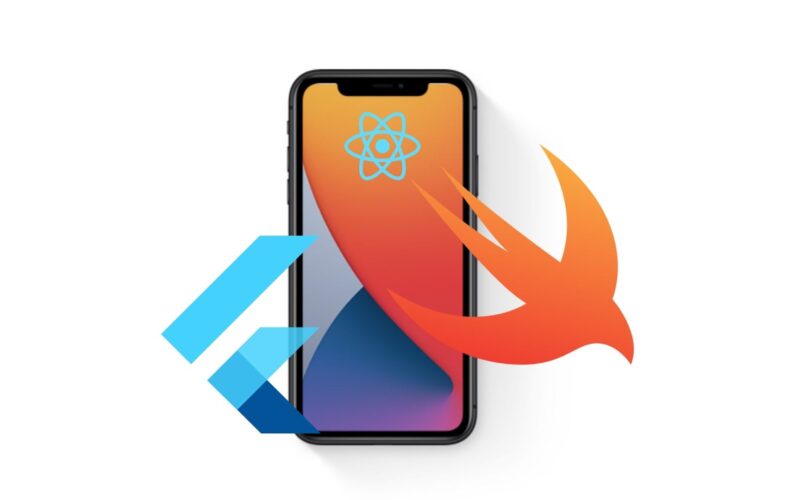India continues to be a go-to offshore destination for scalable iOS app development. This confidence into Indian IT ecosystem is strongly complemented by recent $1Bn investments made by official Apple suppliers to manufacture the hardware components in India as well. Not just the development but the adoption of Apple devices itself has seen an increased proliferation into Asian markets. iOS is slowly & steadily making its way into Asia, now claiming 16% of the market i.e., an increase of 4% from last year. In American market, it’s already the leading player with 50% plus share and in Europe it commands more than 25% of market share. Also, it has been observed that revenue per customer generated from Apple users is way more than any other device/OS users.
So, wouldn’t it make sense for any business, including yours, to devise the right strategy for targeting and converting iOS users? If there is an intersection between your potential client base and Apple’s user base then it certainly does make sense. And “scalable iOS app development” has got to be an integral part of your iOS strategy.
Thinking WHY?
Within 3 days of release Pokemon Go, a game app, was clocking more number of app installs in the US than what Tinder could garner over the years. Few more days down the line, it was enjoying daily active users on the platform close to that of Twitter.
Recently, we saw how Zoom’s user base shooted to the levels of 300 Million monthly active users in March 2020 from 10 Mn active users in Dec’19.
Of-course, virality was a factor behind PokemonGo’s success and usability behind Zoom’s. But technically, what enabled these apps to successfully spike to such insane levels without breaking down?
The answer lies in resilient scalable app architectures.
A system that handles a growing amount of customers by dynamically adding resources to the overall system is called a scalable system.
Scalability is important for your app’s success. When your app is scalable, it can enhance growth and be the supporting pillar behind delivering addictively good user experience (UX) for the users. If your target audience is in millions then good planning and execution are needed from the very beginning. The best time to manage the scaling of an app is before an issue arises. This insight intends to be your go-to guide for salable iOS app development practices. Be the first one to know when we publish a detailed insight on popular iOS app design patterns and scalable iOS app architectures by subscribing to our monthly newsletter.
For now, stay with me to enlighten yourself with some very important factors behind iOS app scalability that I discuss in this article.
Components breakdown for building scalable iOS apps
In the very first step, to build scalable iOS apps, we should start dividing the existing applications into logical units. As apps grow larger, its complexity also soars. As teams and apps grow, boundaries in a codebase start to grow naturally, this leads to a more complex codebase that becomes harder to test, harder to refactor.
When you’re starting a new project or refactoring an existing one, you need to think carefully about whether you need something to be its own module or not.
Once you’ve decided that you have a problem, and modularizing your codebase can fix this problem, you need to identify the scope of your modules. For example
- Data storage
- Networking
- Model definitions
- code that’s used across many projects
- business logic that used on tvOS and iOS
- UI components or animations that use in multiple projects
I hope it gives you an idea of what things might make sense as a specialized module. Granular independent functions performing specific actions with well divided responsibilities are easily maintainable. It diminishes the collaboration pain-points within the development team. This results in faster development and feature release cycles of scalable iOS apps.
Folder Structure For Scalable iOS App Development Projects
Another scalable iOS development practice is to have a common folder structure across the organisation or atleast with the iOS app development team. The folder structure is very important for code maintainability. After working on multiple iOS projects, I have developed a basic file structure that I leverage to make the application easier to grasp.
The organization in the root project repository consists of the following folders:
- App
This folder contains two files in a basic iOS project: “AppDelegate.swift” and “Info.plist”. I place this folder at the top of the root folder to ensure that these files are always easy to find. This folder can also hold configuration files and files that are global to the entire app.
- Constants
- Views
- Controllers
- Models
- Extensions
- Resources
- Storyboard
- API
- Supporting Files
What’s the perfect architecture for building scalable iOS apps?
Good architecture, it’s such a hard topic. There is no silver bullet. I don’t believe there is a single iOS app architecture that can solve all your problems and I think you should always consider things in regards to the use cases and the project requirements.
Generally, some features of a good iOS app architecture includes:
- Balanced distribution
- Easy to understand
- Testability
- Ease of use
- Maintainability
- Flexibility
These are some popular iOS app architectural design patterns
- MVC
- MVP
- MVVM
- Viper
For more deep explanation refer:
https://medium.com/swlh/ios-design-patterns-a9bd07818129
https://medium.com/ios-os-x-development/ios-architecture-patterns-ecba4c38de52
Development Tools/Third-Party Libraries
iOS app development tools & third party libraries simplify a developers work and I highly recommend it for any scalable iOS app development project. First, remember to establish the basic infrastructure. Then, follow the standard practices of creating several versions. After that, decide which architecture will be most efficient for the project.
Here are some tools & third-party libraries that I use to efficiently develop an scalable iOS App –
1. SwiftLint
SwiftLint is a great tool that will make sure you and your team are following the swift coding styles and conventions. It’s real-easy to use and integrate. It’s open-source and you can use only the rules you want. even write your own rules.
2. SDWebImage
It is an Asynchronous image downloader with cache support as a UIImageView category. It has UIKit categories to do things such as set a UIImageView image to a URL.
3. Alamofire
Alamofire is a Swift-based, HTTP networking library. It provides a simple interface on top of Apple’s Foundation networking stack that simplifies common networking tasks. Its specialties include chainable request/response methods, JSON and Codable decoding, authentication and more.
4. SwiftyJson
SwiftyJSON is a simplified JSON parsing library that gives you more precise syntax than the built-in iOS libraries (yes, even more than JSONEncoder from Codable), and is free.
5. PromiseKit
PromiseKit is a framework that will simplify working with async code and make your code very elegant and simple to follow.
Continuous Integration and Continuous Delivery – Agile approach for building scalable iOS apps
Continuous integration and continuous delivery (CI/CD) is extensively used by development teams, even in open-source communities. It offers a sustainable approach to test and deploy code many times a day without the obstacle of doing it manually.
Benefit of Continuous Integration, Continuous Development, Continuous Testing & Continuous Delivery
- Fewer bugs are passed to production as mostly are captured during automated testing.
- Generating a build is easier than before.
- The developer will get to know about any bug in the building phage & can work on fixing then before moving it to another phage.
- QA team will get more time to improve the product quality
- It is easy to make small changes & encourage the team to finish it fast.
- Released builds are less risky & can be easily fixed.
- Customers can notice continuous improvement & quality of products on an everyday basis.
Remember, a scalable mobile app is a methodical approach to create a mobile app that is always available, performs flawlessly, retrieves all the data quickly, responds in real-time and always has room for more functionalities. The above information helps you to build scalable and maintainable iOS projects. However, please keep in mind that things may change over time.
Follow me on LinkedIn
Feel free to approach Codewave For designing and building scalable iOS apps.
iOS Developer in Codewave Technologies Pvt Ltd. My primary focus and inspiration for my studies is Mobile Development.







